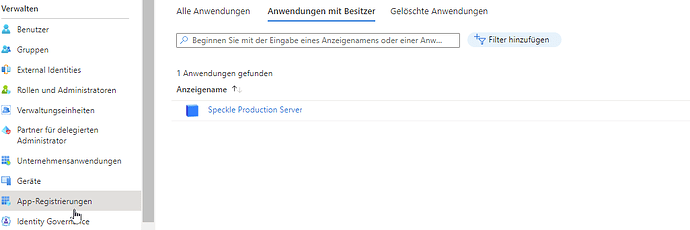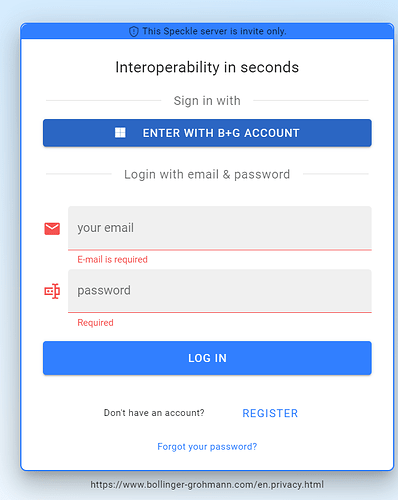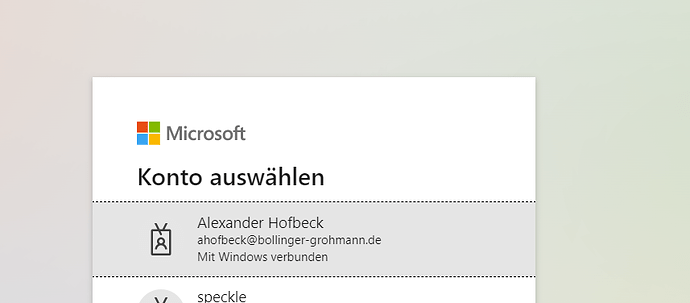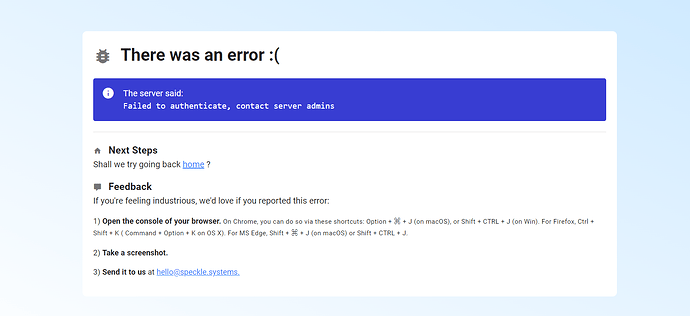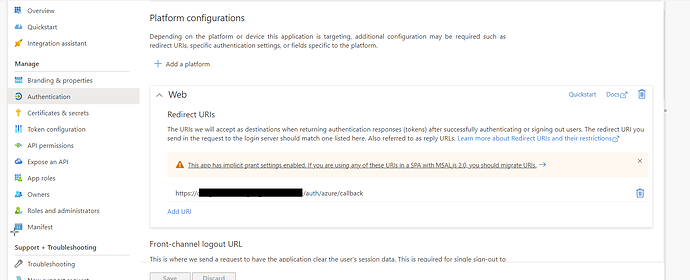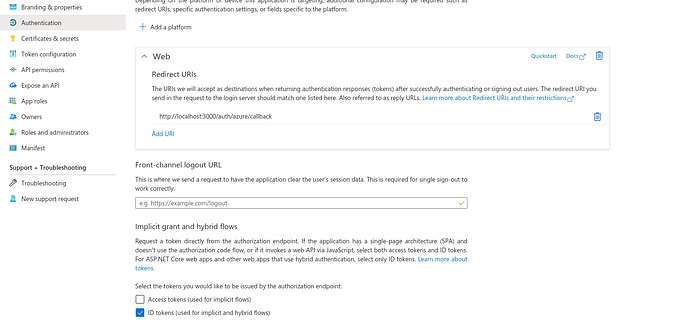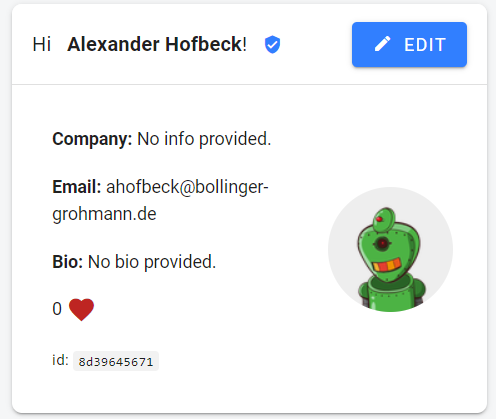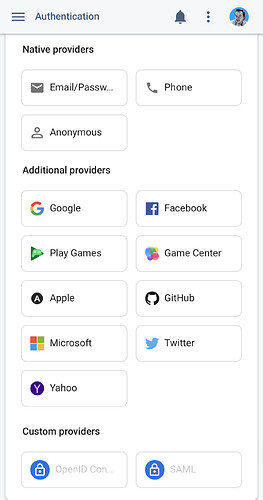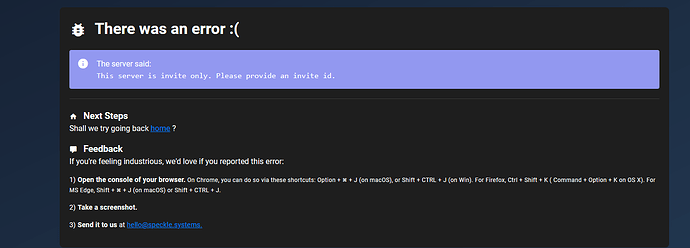and here is the log
host":“speckle-server:3000”,“user-agent”:“Mozilla/5.0 (Windows NT 10.0; Win64; x64) AppleWebKit/537.36 (KHTML, like Gecko) Chrome/110.0.0.0 Safari/537.36 Edg/110.0.1587.63”,“referer”:“https://designflow.bollinger-grohmann.com/authn/login"}},“res”:{“statusCode”:200,“headers”:{“content-length”:“369”,“content-type”:"application/json; charset=utf-8”,“x-ratelimit-remaining”:49,“x-request-id”:“44220fdd-a6fd-4785-a0df-2376adccf45c”}},“responseTime”:36,“msg”:“request completed”}
{“level”:“info”,“time”:“2023-03-10T13:42:16.616Z”,“req”:{“id”:“268479d6-3925-4973-b91b-d1dd4284d1e3”,“method”:“POST”,“path”:“/graphql”,“headers”:{“host”:“speckle-server:3000”,“user-agent”:“Mozilla/5.0 (Windows NT 10.0; Win64; x64) AppleWebKit/537.36 (KHTML, like Gecko) Chrome/110.0.0.0 Safari/537.36 Edg/110.0.1587.63”,“referer”:“https://designflow.bollinger-grohmann.com/authn/login"}},“res”:{“statusCode”:200,“headers”:{“content-length”:“1281”,“content-type”:"application/json; charset=utf-8”,“x-ratelimit-remaining”:48,“x-request-id”:“63949c64-4e9b-407f-ab23-3472c043f081”}},“responseTime”:39,“msg”:“request completed”}
{“level”:“info”,“time”:“2023-03-10T13:44:17.686Z”,“req”:{“id”:“79567777-3679-4d4a-807c-4d2ea15a5518”,“method”:“POST”,“path”:“/graphql”,“headers”:{“host”:“speckle-server:3000”,“user-agent”:“Mozilla/5.0 (Windows NT 10.0; Win64; x64) AppleWebKit/537.36 (KHTML, like Gecko) Chrome/110.0.0.0 Safari/537.36 Edg/110.0.1587.63”,“referer”:“https://designflow.bollinger-grohmann.com/authn/login"}},“res”:{“statusCode”:200,“headers”:{“content-length”:“369”,“content-type”:"application/json; charset=utf-8”,“x-ratelimit-remaining”:48,“x-request-id”:“0efe531e-8c39-496a-b032-a5c2add13692”}},“responseTime”:77,“msg”:“request completed”}
{“level”:“info”,“time”:“2023-03-10T13:44:17.693Z”,“req”:{“id”:“8477f0b7-244b-4678-89df-edd46d71ebab”,“method”:“POST”,“path”:“/graphql”,“headers”:{“host”:“speckle-server:3000”,“user-agent”:“Mozilla/5.0 (Windows NT 10.0; Win64; x64) AppleWebKit/537.36 (KHTML, like Gecko) Chrome/110.0.0.0 Safari/537.36 Edg/110.0.1587.63”,“referer”:“https://designflow.bollinger-grohmann.com/authn/login"}},“res”:{“statusCode”:200,“headers”:{“content-length”:“1281”,“content-type”:"application/json; charset=utf-8”,“x-ratelimit-remaining”:49,“x-request-id”:“da04938e-5163-4161-a292-3a32de4477b2”}},“responseTime”:85,“msg”:“request completed”}

